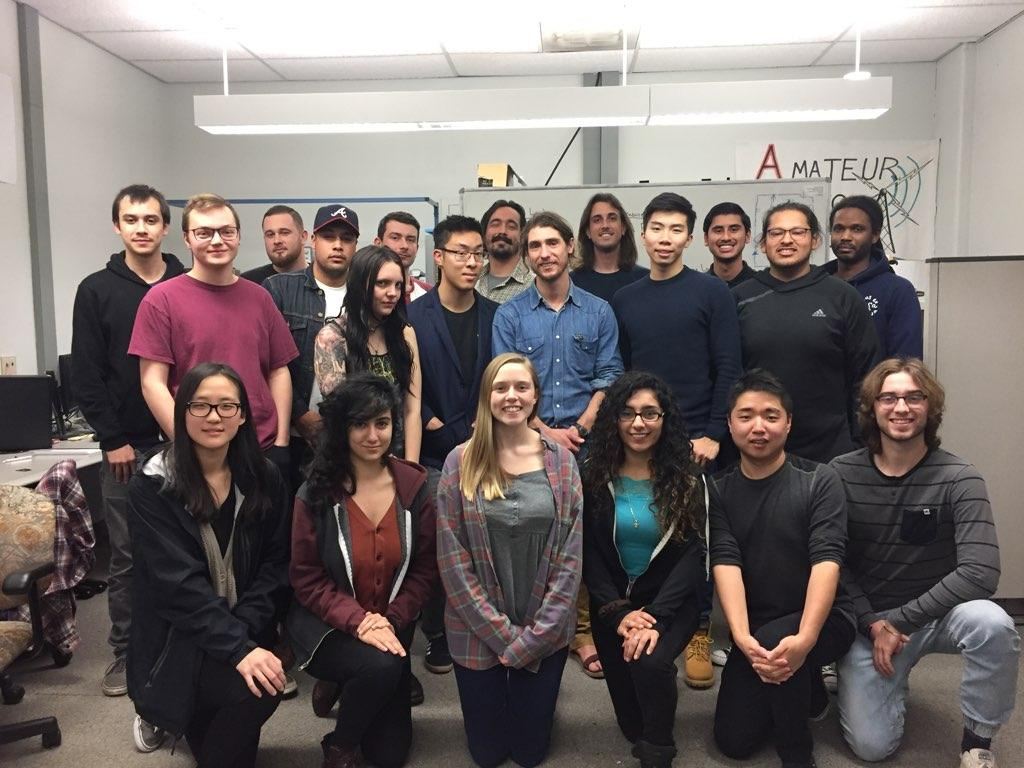SlugSat
Putting a nano-satellite into low earth orbit (LEO) for communications use by amateur radio operators
Team Lead: Qingyu Han
The SlugSat project aims to provide a alternative communications method for the amateur radio (AR) community. Conventionally, satellite communications are conducted on the VHF and UHF band of the electromagnetic spectrum. (30 [MHz] - 3 [GHz]) There are very few satellites in orbit that provide the opportunity for communications at the HF frequency range. (3 - 30 [MHz])
The addition of SlugSat will also allow more AR operators to hone their skills and increase the number of volunteers during catastrophes such as the hurricane that devastated Puerto Rico last summer. Furthermore, there will be a scientific module that categories the interaction between HF electromagnetic waves and the various layers of the atmosphere. A systematical data collection of this scale has never been done before. The satellite will be accessible by any amateur radio operator licensed by the FCC or the equivalent foreign agencies. 
Amateur Radio has a long history in space, with the first amateur-radio carrying satellites launched in the early 1960s. Hams from all over the world have used these satellites to make contact with each other. The UCSC Amateur Radio Club has a satellite station located in BE308 which has the ability to communicate with certain types of satellites. A linear transponder (sometimes known as a bent-pipe transponder) receives a range of frequencies and then linearly translates them to another range of frequencies which it transmits down to earth. In this manner, by transmitting to a satellite, one is able to communicate with anyone within the footprint of that satellite. In addition, there are two other communications requirements for this satellite: the transmission of satellite telemetry down to Earth and the reception of commands from Earth.
The CubeSat project started in Cal Poly, San Luis Obispo and have launched miniature satellites with various payloads for years. After Cal Poly's initial success, many space agencies such as NASA, Space X and the US Air Force have jumped on board to provide launch opportunities for various educational facilities. Our main competitor will be other CubeSat design teams as there are only limited launches. However, we believe a communications CubeSat that utilizes the HF frequency range and categories HF propagation will be one of the first and will see many uses by the amateur radio community.
Objective
The primary user will be the international amateur radio community, as the SlugSat will permit long range space communications in the HF frequency band, which is immensely under-utilized as of this moment.
The secondary customer will be the science community, which will benefit from HF electromagnetic wave propagation data collected by the satellite during its life time.
The final beneficiary will be the CubeSat community, which will gain extensive satellite design experiences from our documentations. The goal of this project is to take the requirements noted above and determine the best way to fit them into a box while balancing various factors such as risk, cost, and performance.
Interested?
Contact us for more info!
slugsat@gmail.com
SlugSat Website (Work in Progress!)
https://sites.google.com/ucsc.

